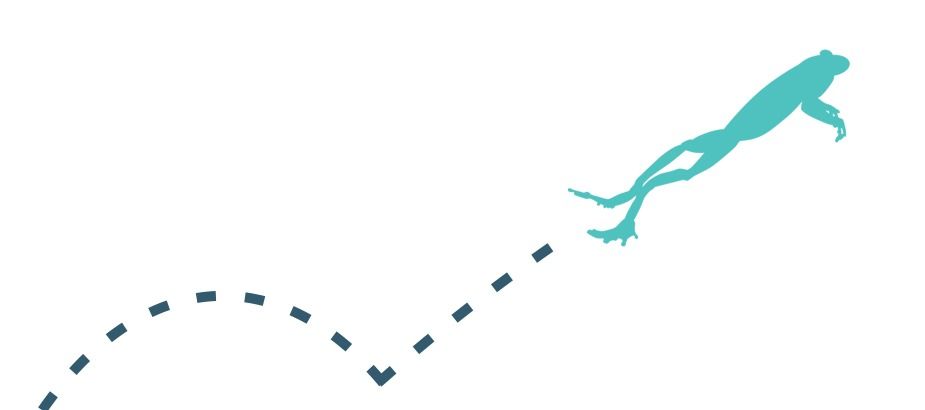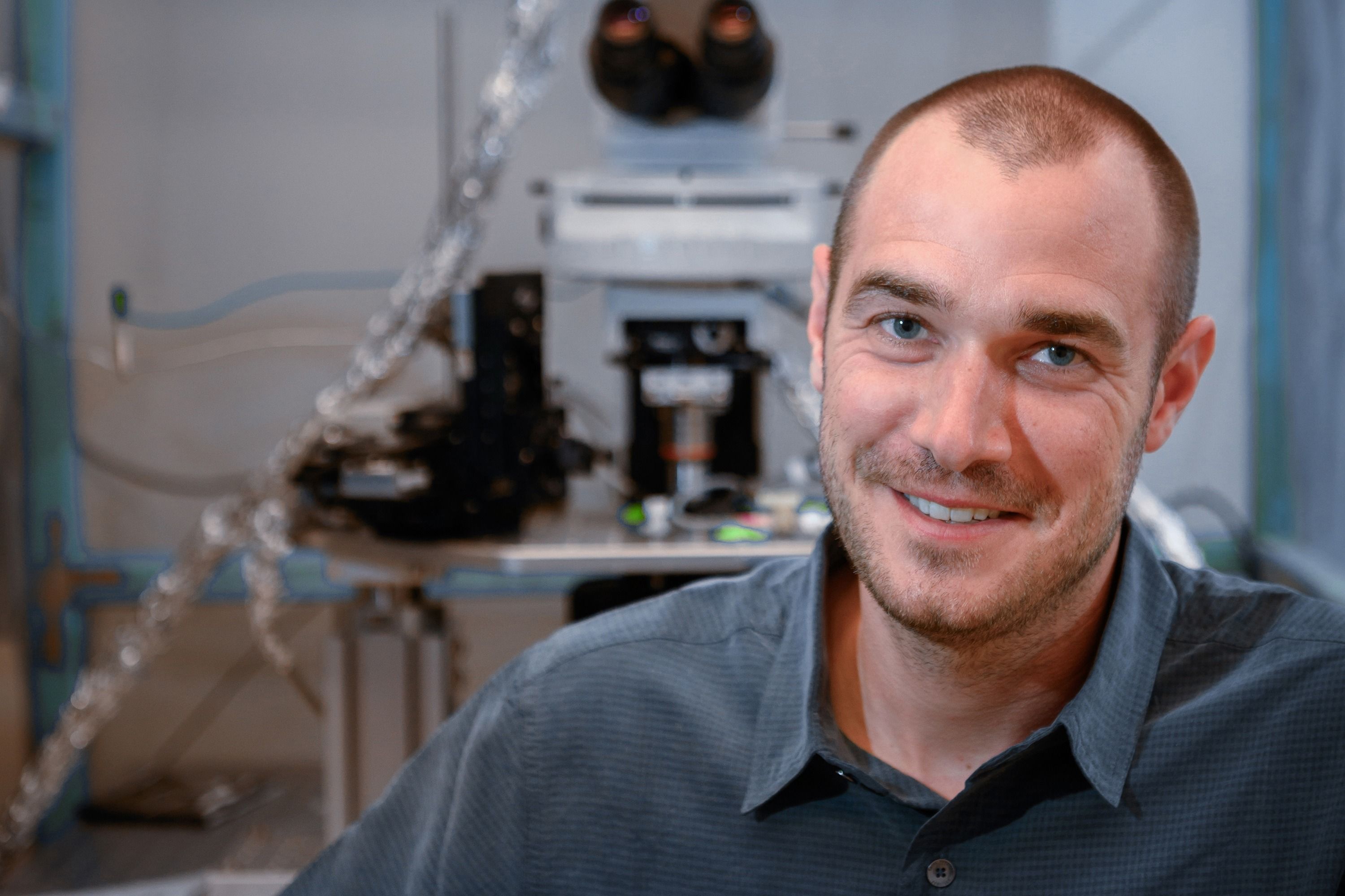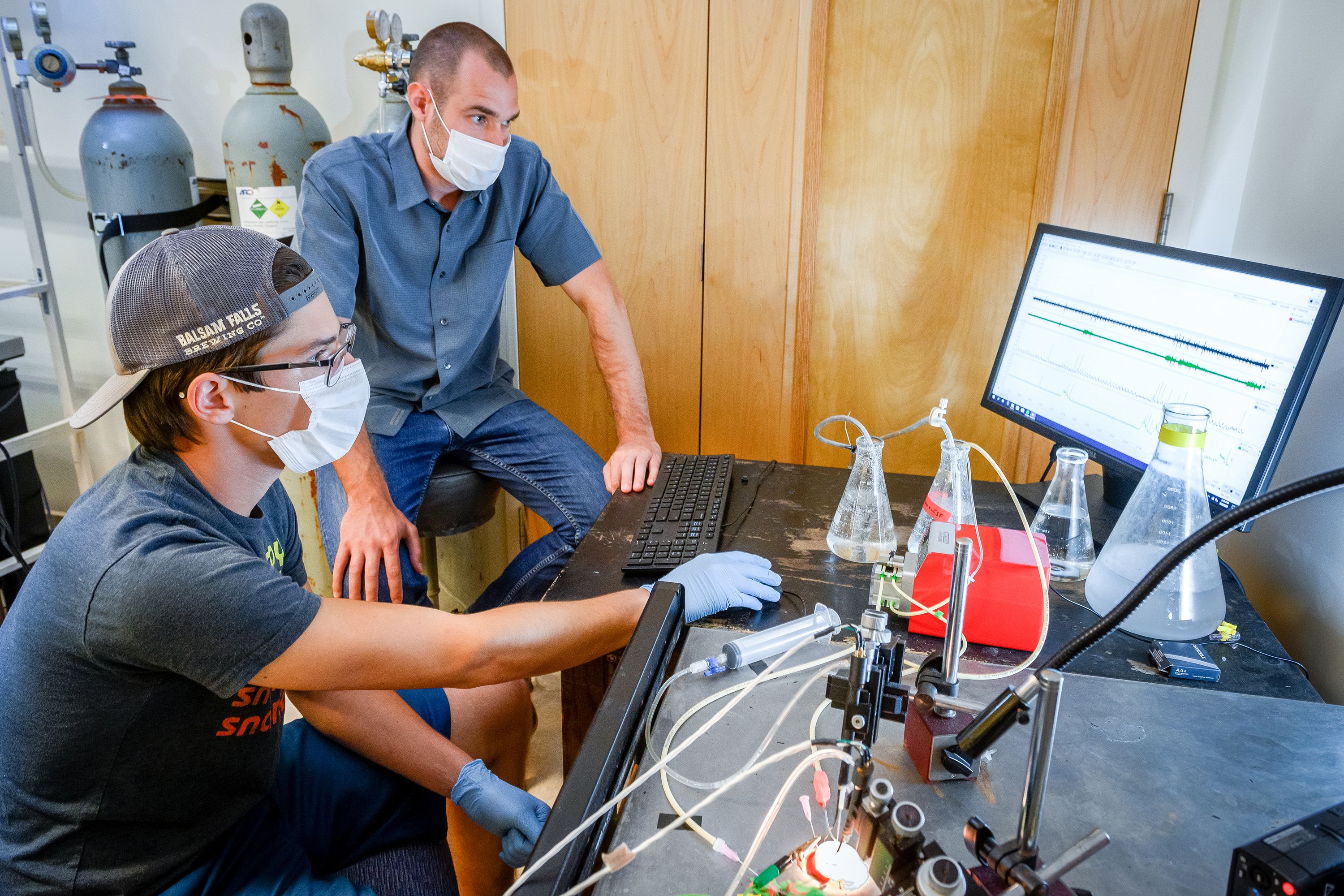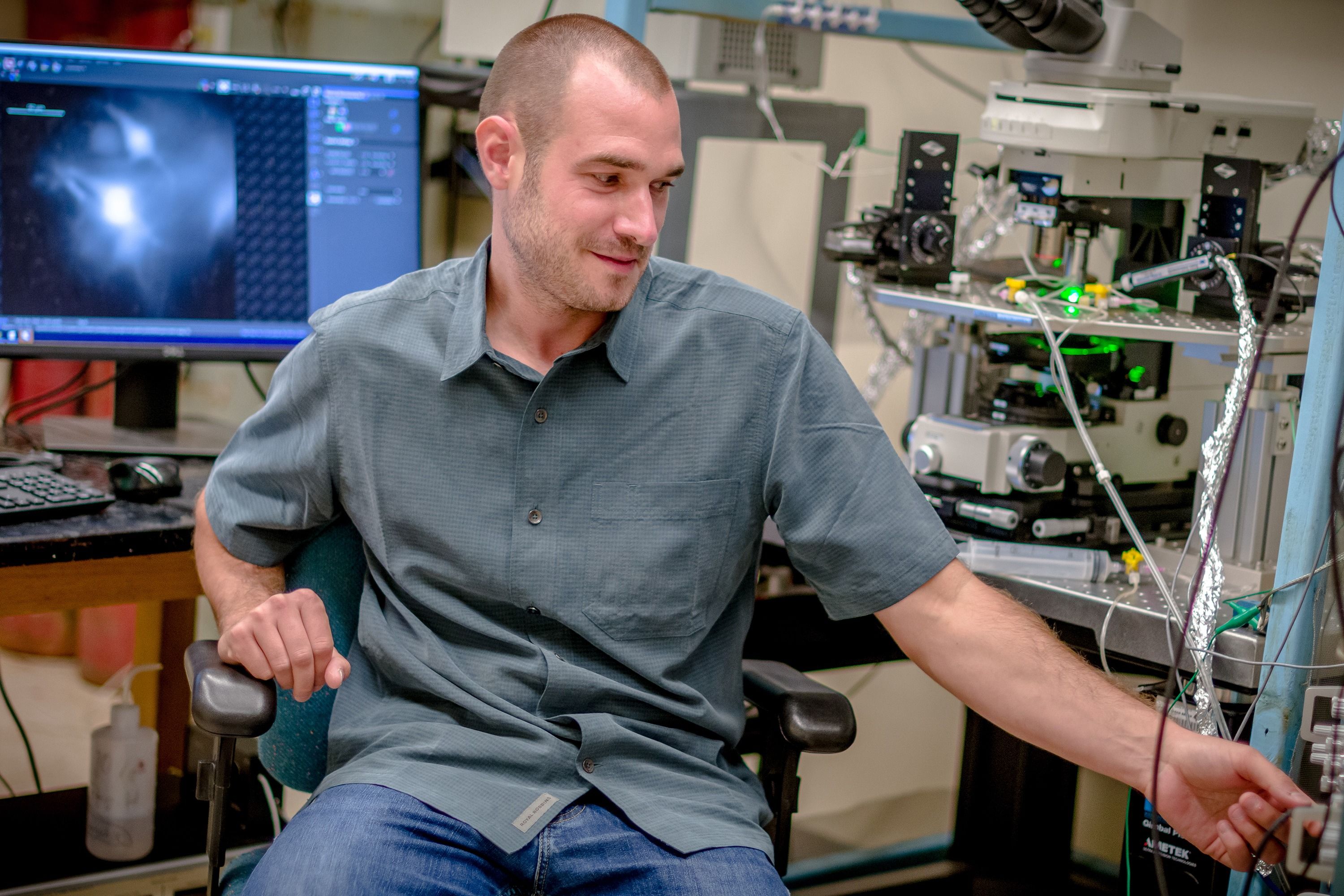Fall 2020 | The Right Idea
SMALL LEAP FOR FROGS
GIANT LEAP FOR MANKIND
SMALL LEAP FOR FROGS GIANT LEAP FOR MANKIND


The brains of bullfrogs hold secrets that could, someday, help fighter pilots perform better and protect stroke patients.
That’s why two federal agencies — the National Institutes of Health and the Department of Defense — have awarded Assistant Professor of Biology Joseph Santin nearly $1 million to study how the brain circuit responsible for breathing in frogs can, in certain circumstances, function dramatically longer than expected without oxygen.
“We found that if we take animals that had recently been hibernating, and then make the particular neural circuit that we study hypoxic or anoxic — put them under low- or no-oxygen conditions — it works for a lot longer without oxygen than it did before hibernation,” he says.
Santin’s research isolates the neural cells responsible for breathing in frogs in a petri dish, where they can be examined and exposed to different conditions more easily. Normally, this neural circuit might run for five to ten minutes without oxygen. But Santin and his students have found that, after hibernation, these circuits can continue to function for much longer without oxygen − often upwards of three to four hours.
Why is Uncle Sam interested? Because we’d like human neurons to function better in environments with limited or no oxygen.
Help for stroke victims, pilots
The National Institutes of Health awarded Santin’s lab $355,000 for the potential application of his research for stroke treatment. When a stroke blocks blood flow to part of the brain, those neural tissues stop getting oxygen, often leading to permanent brain damage, paralysis, or even death.
According to the Centers for Disease Control and Prevention, about 795,000 people have strokes each year and some 140,000 people die due to them. It is also a leading cause of disability in people over age 65.
The Department of Defense granted Santin $637,000 because the research could point the way to helping pilots function better in high-altitude, low-oxygen environments where clear thinking and sharp reflexes are critical.
Santin, a neurophysiologist, didn’t set out to study frog brains or how cells perform in low-oxygen environments. Rather, he’s interested in the cellular and molecular roots of animal adaptations, such as hibernation.
“As soon as we stop coming up with interesting questions in the amphibian respiratory system, I’ll stop asking them and do something different. But interesting questions just keep popping up.”
Flipping a switch
The interesting question here is how hibernation seems to prime the brain in a way that protects it from damage.
“We basically want to figure out how to flip the switch between hypoxia-intolerant states, which our human brains constantly exist in,” Santin says, “and keep brain function from collapsing when you take away the energy source.”
Frogs aren’t humans, of course. However, he notes that basic cellular functions, such as energy metabolism, are similar across most animals. Both frog and human brains use oxygen and glucose to produce energy.
Though it’s too early to say exactly what’s going on, Santin suspects a systemic effect involving multiple chemical and cellular functions, which make brain cells more efficient and allow them to produce energy with less or no oxygen.
“I think it’s going to ultimately be a kind of a supply and demand issue,” he says. “You’re going to have to manage the supply of energy and also dial down the demand. The challenge is that dialing down demand while maintaining function is not a trivial task.”
If Santin can unlock how amphibian neural circuits manage that, however, future researchers might one day turn those discoveries into therapies.
“The dogma is that the brain is the most energetically costly, oxygen-dependent organ,” he says. “We’re showing that doesn’t always have to be true.”
“I think students who can be part of the entire process of science are more likely to be successful in any area that requires critical thinking — academic research or otherwise,” says Santin, who has mentored eight students since he launched his lab at UNCG last year. He is pictured here with graduate student Nikolaus Bueschke. Sasha Adams was introduced to the Santin lab through UNCG’s NIH-funded MARC U-STAR program, which aims to increase diversity in the biomedical sciences. She’s already co-authored one paper on hypoxia tolerance and is working on a second. She hopes to go to graduate school and continue working in Santin’s lab. “He’s a great mentor,” she says. “He’s helped me to grow a lot as a scientist and researcher.” See more photos on UNCG Research Flickr.


